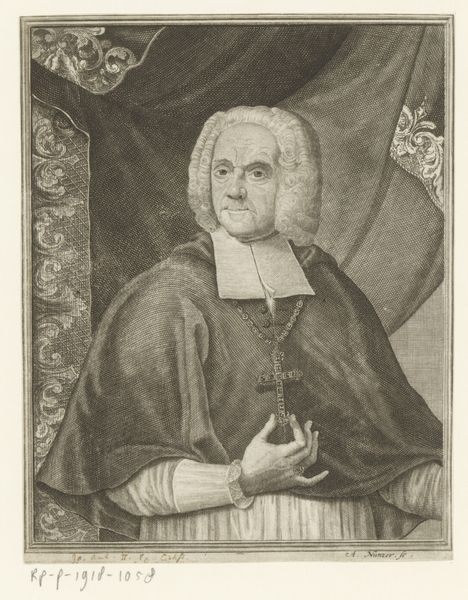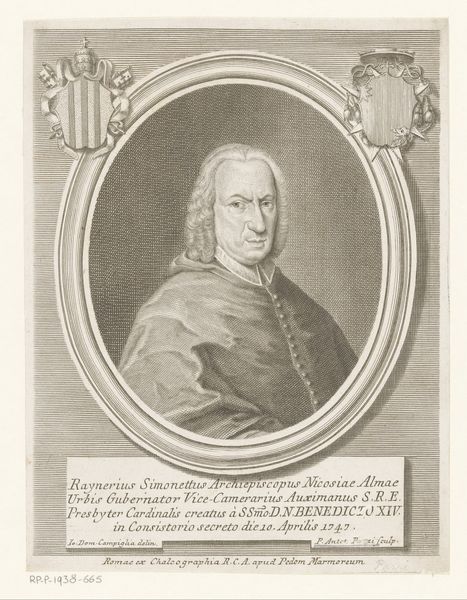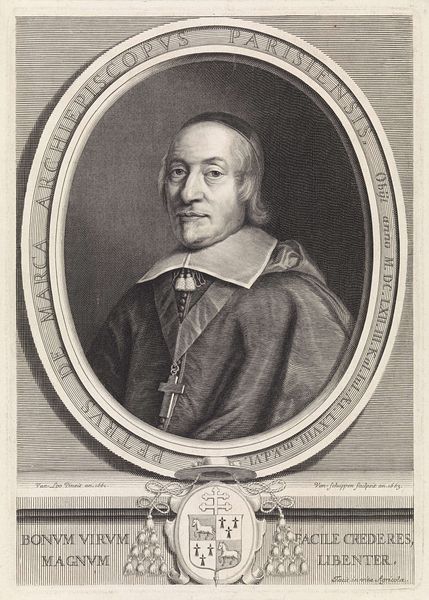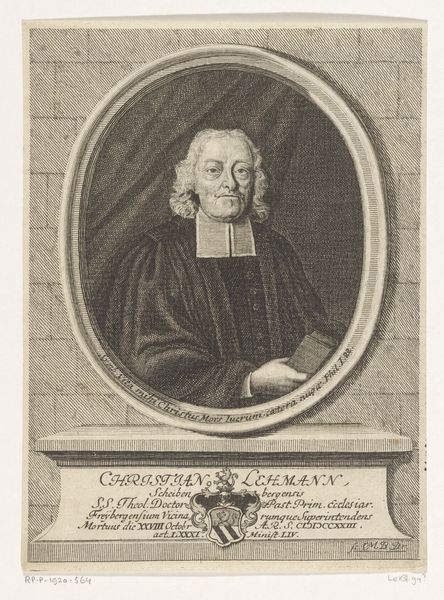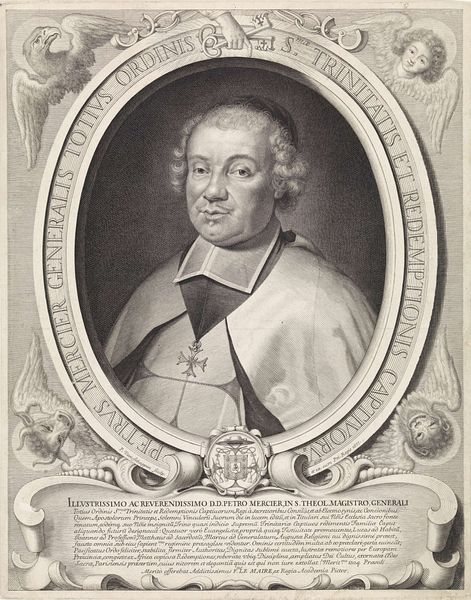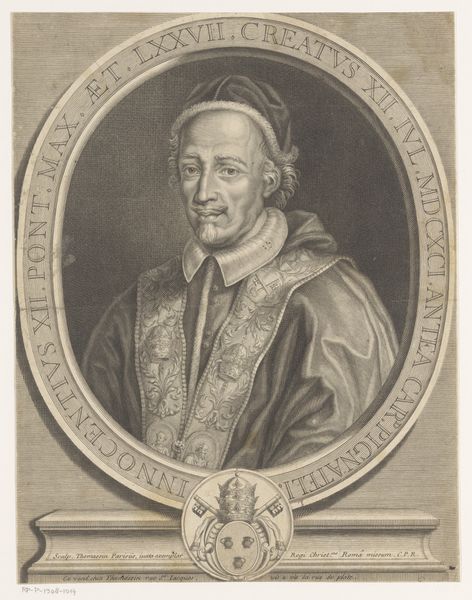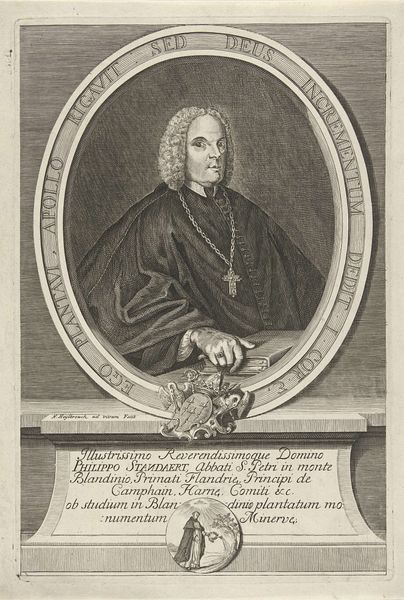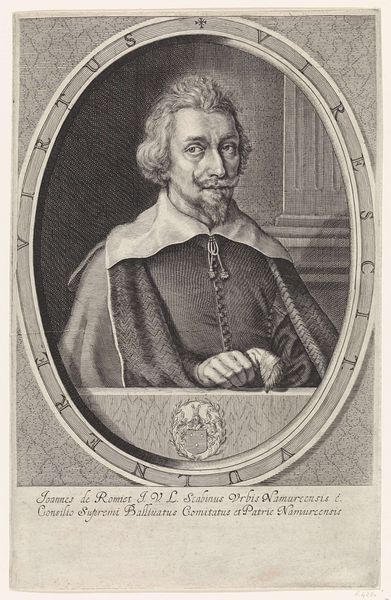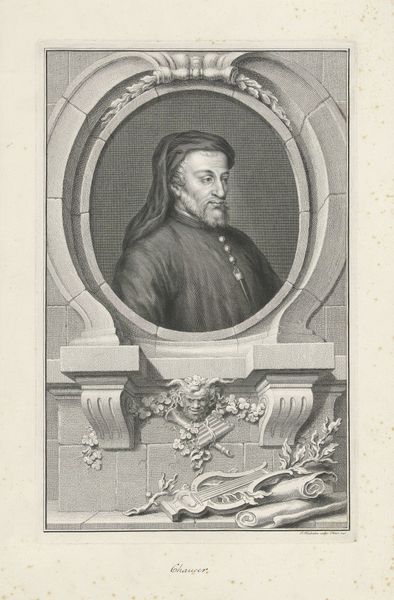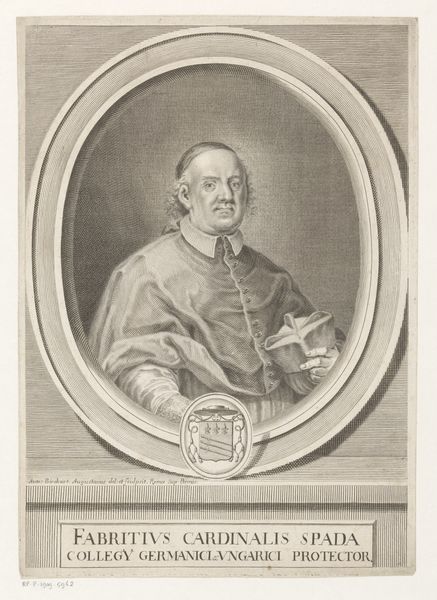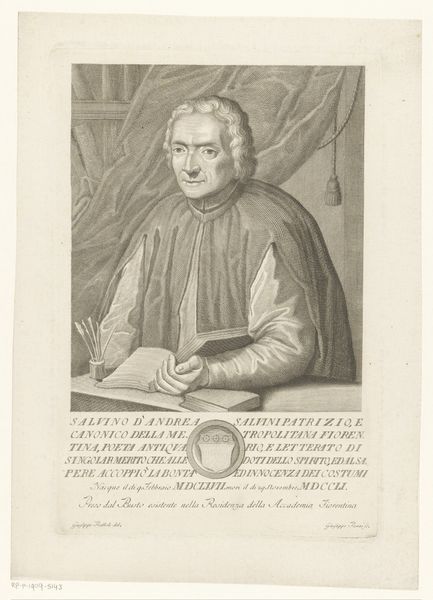
drawing, graphic-art, print, engraving
#
portrait
#
drawing
#
graphic-art
#
baroque
# print
#
old engraving style
#
history-painting
#
engraving
Dimensions: height 272 mm, width 184 mm
Copyright: Rijks Museum: Open Domain
Curator: This print from 1747 is titled "Portrait of Cardinal Angelo Maria Quirini," by Carlo Orsolini. The print shows Quirini holding a book next to a parapet, framed in a cartouche with angels at the bottom, as well as a draped curtain, a tassel, and Latin text. What strikes you initially? Editor: The pervasive stillness and the monochromatic palette lends it a sense of dignified solemnity. Note how the linear precision creates a meticulous representation and emphasizes his high status and authority through symbolic objects like the book and the robes. Curator: Precisely. Quirini was a prominent figure in the 18th century—a cardinal, scholar, and librarian of the Vatican. The engraving functions as a piece of visual rhetoric, asserting his accomplishments through symbolism, for example through the library rendered on the backdrop to highlight his erudition and devotion to scholarship. Editor: Yes, and the composition reinforces that; his direct gaze and subtle smile is immediately captivating. The balanced arrangement between text and portrait and architectural features of the composition invite viewers to examine him closely, from his features to the smallest engraved line. This directs one's gaze, encouraging engagement with not just the representation, but also his persona. Curator: This portrait was commissioned as a public commemoration after his numerous contributions to the city, including the establishment of a library. The inscription in the cartouche underscores this, further solidifying his legacy through public acknowledgment and remembrance. Editor: It seems intended to convey both his personal attributes and institutional power. The formality inherent to engravings speaks to its role as a promotional piece as well. It certainly lends this Baroque print the quality of timelessness and grandeur that continues to resonate. Curator: Absolutely. In the end, viewing it with attention, we see Orsolini successfully captures the Cardinal in this time, forever enshrining his contributions in collective memory and reinforcing both secular and ecclesiastical power through symbolic portraiture. Editor: It's fascinating how studying this portrait reveals layers of meaning, blending historical context and aesthetic design, all contributing to a rich viewing experience.
Comments
No comments
Be the first to comment and join the conversation on the ultimate creative platform.
